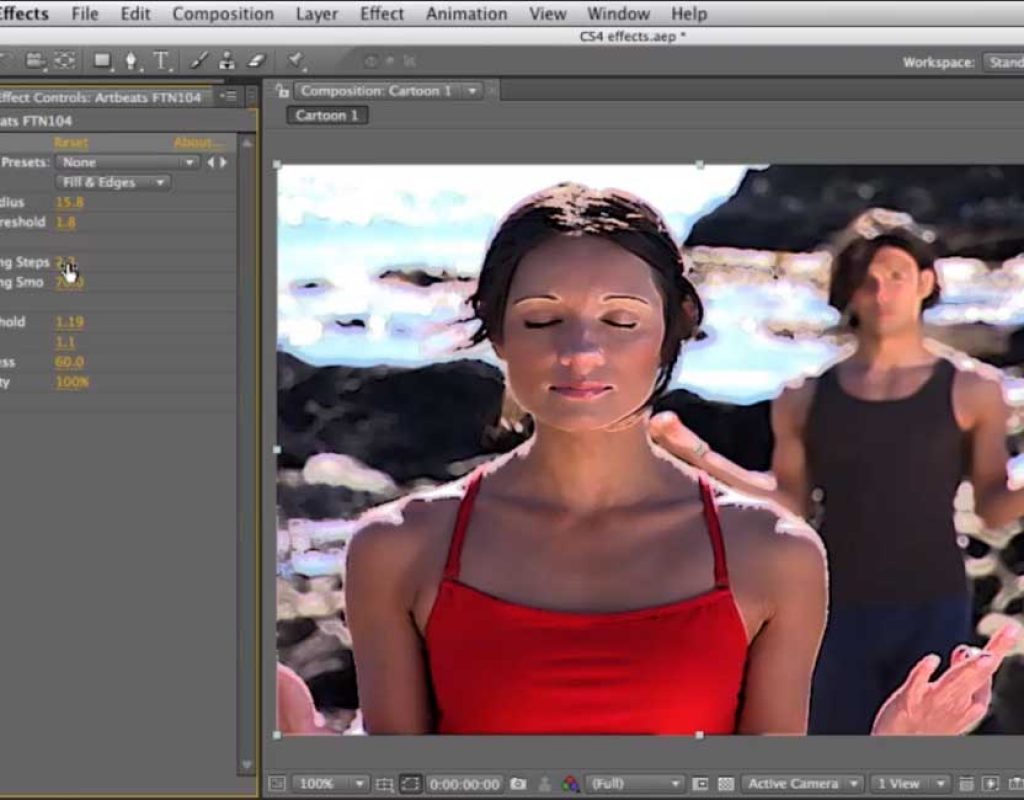A major part of After Effects has always been its effects plug-ins. It used to be common for new versions to introduce new effects. Here we’ll take deep dives into three effects that were introduced in After Effects CS4: Cartoon Effect, Bilateral Blur, and Turbulent Noise. The first two are great for creating stylized looks beyond their most obvious applications (live-action cartoons and skin softening, respectively) while Turbulent Noise is useful for creating organic phenomena such as fire and clouds.
Cartoon Effect
https://youtu.be/aq6TtwdKQ8Y
Cartoon Effect was added to Adobe After Effects back in CS4 when that posterized, live-action cartoon look was all the rage. However, this plug-in is not a one trick pony: it’s a great tool in general for finding edges, adding outlines, and giving stylized colorations to footage. This movie takes a deep dive into its controls, sharing a few gotchas as well as tips to get the most out of it.
The one section that is obsolete in more current versions of After Effects is using the Brainstorm module to generate ideas: Unfortunately, Brainstorm was removed from AE Creative Cloud. But if you’re still running an older permanent license version, it’s another great trick to add to your toolkit.
Bilateral Blur
https://youtu.be/B20lJtuVJG8
Bilateral Blur is an unusual effect that looks for edges in an image, keeps those sharp, and blurs the areas in between. This is the core idea behind “skin softening” filters that keep details in the eyes, lips, etc. but otherwise try to smooth out any unevenness in the skin texture.
Bilateral Blur can be used for “corrective” applications such as skin, reducing compression artifacts and noise, etc., but it also has a creative side – including creating a “filmic glow” look. This movie shares how to get both out of this filter, while also warning you of some of the “gotchas” you may encounter.
Turbulent Noise
https://youtu.be/MMr3fjGRZ2Y
Turbulent Noise was an update to the popular Fractal Noise effect that many used to create fire, clouds, and other natural phenomena. Its main advantages include faster rendering; some also feel it has a more organic look. However, it lacks Fractal Noise’s “Cycle Evolution” option that makes it possible to create seamlessly looping animations. This movie compares the two side by side, plus demonstrates several applications and “looks” using Turbulent Noise.
These movies previously appeared on Lynda.com/LinkedIn Learning. They’ve retired this course from their library, so we’re making the movies from it available publicly for free. You can either scan our page on ProVideo Coalition to see the other free movies we’ve posted over the last couple of years, or check out the Crish Design channel on YouTube.

Filmtools
Filmmakers go-to destination for pre-production, production & post production equipment!
Shop Now













